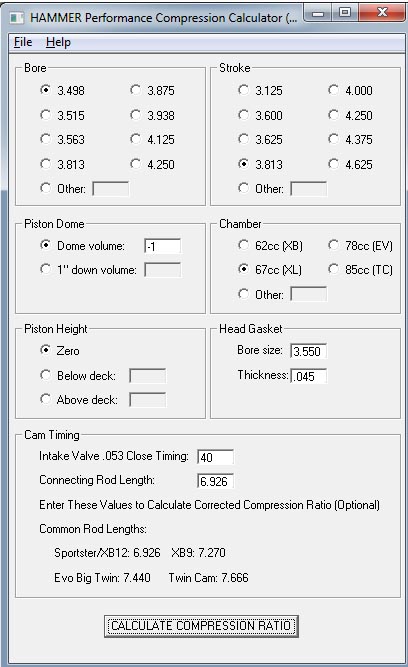
the remaining space of the combustion chamber where the spark plug and valves reside. It will calculate the DCR based on the modified stroke length, which in turn is derived from the rod length and the IVC. RB Racings Squish Band Calculator for engine and piston design. You can open the dynamic compression ratio calculator in our calculator's advanced mode. You can discover more in Omni's Carnot efficiency calculator. This is why the dynamic compression ratio (DCR) is dependent on the intake valve closing (IVC) point, which is expressed as an angle after the bottom dead center (ABDC). We can only speak about compression once the valve is completely closed. At that time, though, the intake valve is not yet closed, so no compression occurs - the air is "pushed out" through the valve. The piston reaches its lowest position (bottom dead centre) and starts moving up again. When it moves up, the volume inside the cylinder is compressed when it moves down, fresh fuel and air enter the chamber through the intake valve. In a combustion engine, the piston moves up and down. Why? It doesn't take into account the closing of the intake valve. However, this number does not perfectly describe reality. Using the compression ratio formulas above, you will be able to compute the static compression ratio.

For this example on a turbocharged SBC, the exhaust clearance was.

You may calculate it by multiplying the displacement volume by the number of cylinders. Now subtract the difference in the gasket thicknesses and you should have an accurate measurement of the piston-to-valve clearance. Our compression ratio calculator estimates the value of the CR and the total engine volume.


 0 kommentar(er)
0 kommentar(er)
